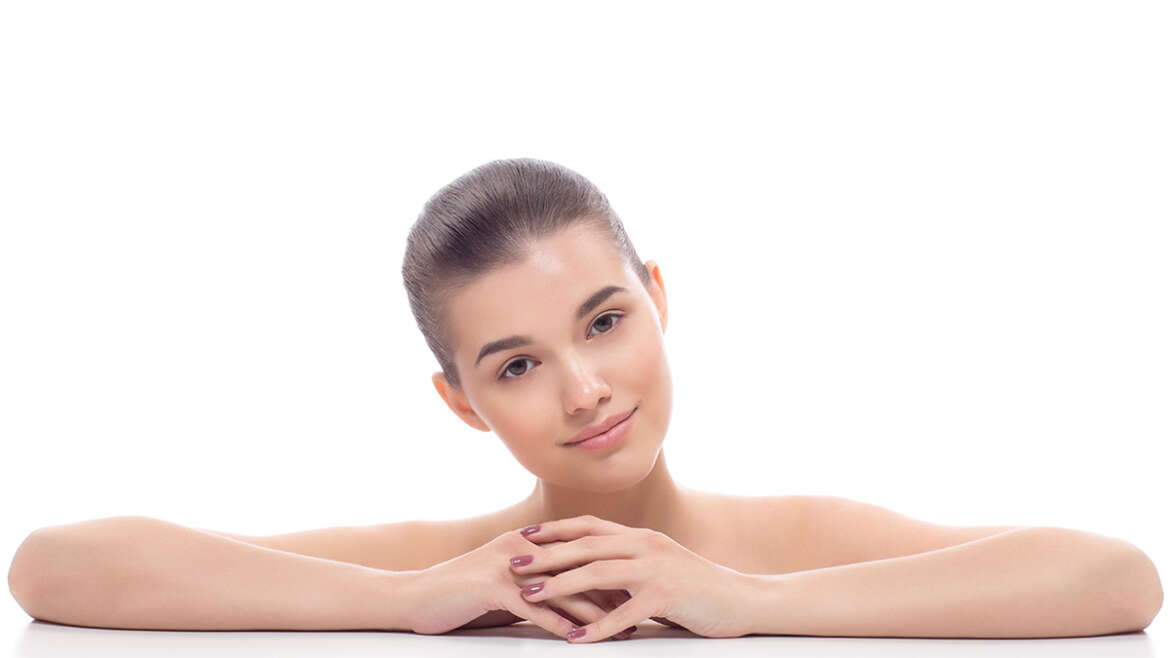One way to tighten the skin in a non-invasive way is Skin Tyte. This treatment heats up the collagen underneath the skin for great tightening results. Hear from Dr. Elizabeth Roche of Elizabeth Roche MedSpa about this tightening treatment. Listen or read more to learn about Skin Tyte.
John Maher: Hi, I’m John Maher, and I’m here today with Dr. Elizabeth Roche, founder of the Elizabeth Roche, MD Med Spa in Bergen County, New Jersey, a medical aesthetics center committed to providing people with the most advanced procedures available to restore youth while preserving the beauty and functional health of your skin. Today our topic is Skin Tyte. Welcome, Elizabeth.
Elizabeth Roche: Hi, John. Great to be back.
John: So, Elizabeth, what is Skin Tyte? That’s “Skin”, and then Tyte is spelled T-Y-T-E.
Elizabeth: Skin Tyte is a procedure that tightens skin. It’s part of our laser. We have a Sciton laser, and it’s actually a trade name, and how it works is that it puts heat and energy into the skin’s surface and penetrates down to the dermis. This heat is a gradual buildup, and over time when you put heat into collagen, it’s going to recoil and you get tighter skin and a more youthful appearance.
Difference Between Skin Tyte and Ultherapy
John: Okay, so we’ve talked about Ultherapy, which uses ultrasound waves in much the same way. How does Skin Tyte differ from Ultherapy?
Elizabeth: Yes, this is actually using light waves instead of ultrasound waves, and you come in for a series of treatment so it’s not as intense as the Ultherapy; and let’s say you’re having the procedure done, we use an ultrasound gel, but we’re using that to glide the transducer back and forth over your skin. The handpiece is heating up and we actually are taking external temperature and we’re trying to get the area up to 40 degrees Celsius, which is about 104 degrees Fahrenheit. Because we know at that temperature, collagen remolding and recoiling begins.
So, each section of the face, we’re going back and forth with this handpiece and it’s a very comfortable procedure. You feel the heat building up, and at about 104 you’re like, “Okay, that’s about as hot as I would like it”, and we then move to another area of the face. It’s probably a treatment that takes about half an hour to do a full face, and you would need to come in for a series of treatments. Unlike Ultherapy, which is one treatment and you wait four months, this one you probably do, depending on the baseline skin quality, somewhere between four to six treatments.
What to Expect After a Skin Tyte Treatment
John: Okay, and is there any downtime after getting the treatment done? Or can I just go right back to my daily activities?
Elizabeth: There is no downtime. You can go back to your daily activities. With any heat procedure, you may look a little flushed in the last area that was just treated, and with that, too, there may be a slight swelling, but nothing that anybody else would notice except for yourself. So, you could get up off the table, put your sunscreen on, put your makeup on and go back about your daily routine, and with all of these skin tightening procedures, whether it be Skin Tyte or Ultherapy, the goal is to create heat in that thermal reaction. So, we ask not to cool your face down in any way or take anti-inflammatories after the treatment because you want that inflammatory reaction to occur.
John: Right. So, don’t immediately go to the restroom and wash your face with cold water to cut down on the heat.
Elizabeth: Exactly, and you don’t even feel the heat after you get off the table. You just feel it during the treatment. Unlike a laser peel, you’ll feel that heat for several hours. With this, once it’s done, it’s done. You don’t feel a thing.
Skin Tyte Heats up the Skin to 104 Degrees
John: Okay. Interesting. What does it feel like when it’s getting done, when that Skin Tyte wand is on you and it’s heating? You said it’s heating up your skin to 104 degrees. What does that feel like?
Elizabeth: So, it usually takes a couple of passes. So, it’s a 15-second cycle, and let’s say we’re doing the cheek. So, we’re going back and forth, back and forth, 15-second cycle. We stop, check the temperature. It’s usually, at that point, 36 degrees Celsius, and then we do another cycle, 15 seconds, and it gradually builds up. So, you feel this gradual heat buildup, and usually by the third cycle in a section, that’s usually when it hits that 40 degrees Celsius temperature mark, and then we move onto the next section. But if any area is starting to get warm before the 15 seconds, we just ask the patients just to let us know, and patients are usually right on the mark. They’ll feel that at that 40 degrees Celsius mark, and it may heat up a little bit quicker, so we check and we’re good to go, we move to the next area.
It is intense light. Your eyes are covered, you have laser safety goggles on, so does the operator. But you sense this bright light that’s occurring, that you can kind of see even with your eyes closed.
John: Yeah, that’s interesting. So, how many treatments does a patient need? You said unlike the Ultherapy where they get it done maybe once every four months or so or even longer, they have to come back for multiple treatments. How many do they need to come back for?
Elizabeth: So, for starting with a new face that’s never had any type of skin tightening procedure, it all depends on the quality of their skin during the consultation. So, typically, the average person will need somewhere between four and six treatments. But after three treatments they may say, “Wow, this looks great. I’m really happy. We don’t need to go on to the others.” But I do recommend that the patients get on almost a three month schedule where we’re going to put more heat into the skin at that point.
I make the analogy to someone who dyes their hair. You dye your hair to cover the grays, but you don’t wait for the grays to come down to the ends. When you start to see those roots coming through, you want to get a touch up. So you want to stay on top of it because we continually age and you just want to make sure that you’re keeping that skin nice and tight so you don’t have that aging appearance.
John: So, would they just need to come in once every few months on an ongoing basis in order to keep it going?
Elizabeth: Right. Once they get the baseline four to six treatments, then maybe once a month, once every three months, they get one, maybe two treatments. So, it’s getting that initial tightening and then maintaining it, which is important.
John: All right. That’s really great information about Skin Tyte. Thanks for speaking with me today, Elizabeth.
Elizabeth: Thanks, John.
John: For more information about Skin Tyte or other treatments, visit the website at elizabethrochemedspa.com or call 201-505-1020. That’s 201-505-1020.

